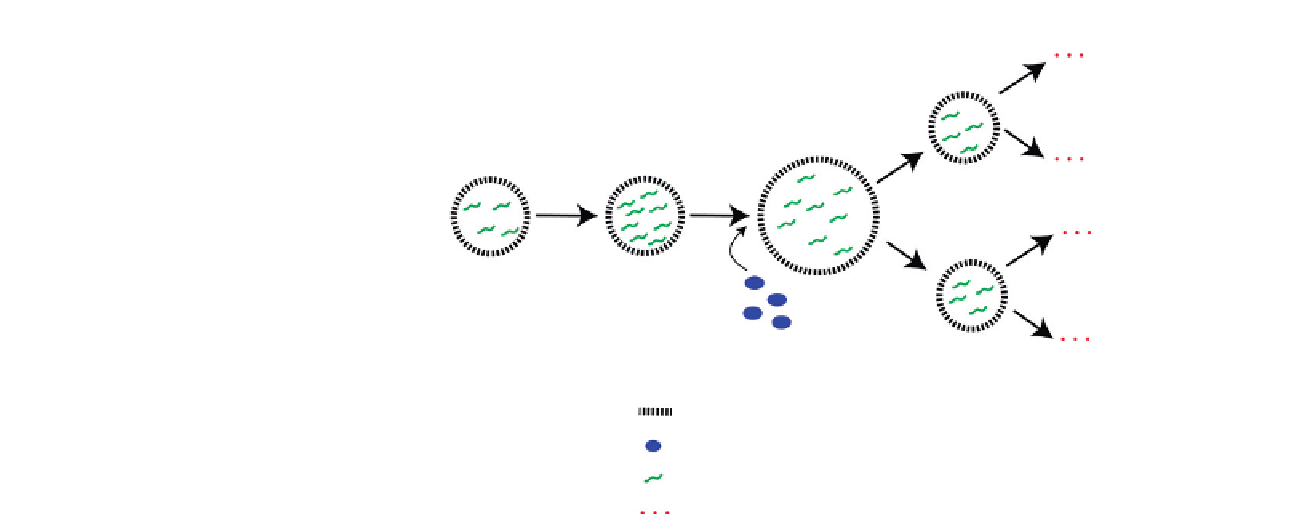Biology Reference
In-Depth Information
Division of
vesicle
Addition of
membrane
precursor
PCR amplification
Daughter
vesicles
Vesicle membrane
Membrane precursor
DNA template
Indicates continued replication
FIGURE 15.5B
Combined replication of DNA and giant vesicles: vesicles are created that contain DNA and other components to amplify the
DNA such as primers, dNTPs, and DNA polymerase. PCR results in amplification of DNA. Addition of a membrane precursor
induces swelling of the vesicle that then leads to division of the vesicle into two daughter vesicles.
advances towards this goal include: (1) the PURE system,
3,64
which reconstitutes translation
from its individual component parts; (2) transcription initiation carried out in the PURE
system;
132
(3) the PURE system utilized for protein synthesis in liposomes;
133
and (4) the
PURE system utilized to translate and translocate presecretory and integral membrane
proteins into liposomes, which is necessary for making an artificial cell that can grow and
maintain a bilayer membrane.
134
292
Other studies have attempted to enable self-copying systems. A study in 2008 created a
replicating system that involved containment of the RNA of the
β
subunit of the Q
β
replicase along with purified translation factors (
Fig. 15.5D
).
135
A functional Q
β
replicase
was assembled when the RNA was translated into the
subunit protein, which assembled
with other subunits already present in the translation system. This replicase could then
replicate the RNA template, leading to simplified replication cycles. Unfortunately, this
RNA
β
protein world.
Researchers have also shown that DNA replication (via PCR) was possible to a limited
extent inside liposomes.
136
However, DNA replication using PCR is not possible in minimal
cells, as the elevated temperatures would denature the proteins required for transcription
and translation.
124
While major challenges remain for building minimal cells, tremendous
progress has been made in the last decade, and there are plans now reported for making a
self-replicating system dependent only on small molecule substrates,
120
paving the way for
outstanding scientific discovery in the years to come.
protein system does not connect directly to the DNA
RNA
CHALLENGES AND OPPORTUNITIES
In the last 5 years, efforts in cell-free synthetic biology have grown at a remarkable rate,
producing synthetic gene circuits, enabling commercial production of proteins, and setting
the stage for minimal cells. Immediate challenges and opportunities for this emerging field
include reducing costs and increasing scale. Further challenges and opportunities include the
development of methods for multienzyme synthesis and purification of multienzyme
ensembles.


